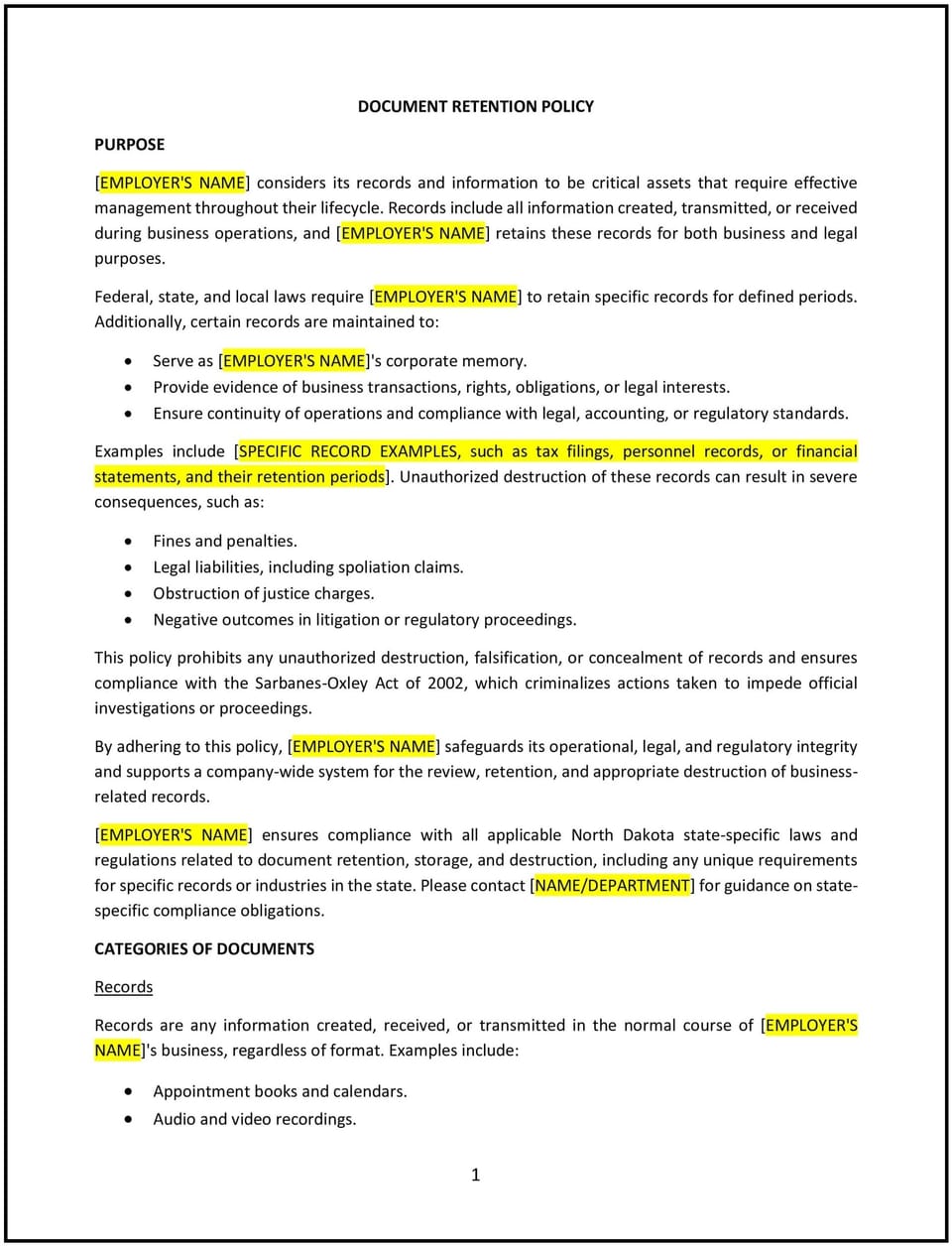Document retention policy (North Dakota): Free template

Document retention policy (North Dakota)
This document retention policy is designed to help North Dakota businesses establish guidelines for storing, maintaining, and securely disposing of company records. The policy outlines retention periods, compliance requirements, and security measures to ensure proper record management.
By implementing this policy, businesses can improve document organization, protect sensitive data, and meet regulatory requirements.
How to use this document retention policy (North Dakota)
- Define document categories: Identify which records require long-term retention, such as financial, legal, and HR documents.
- Establish retention periods: Specify how long different types of documents must be kept before disposal.
- Implement secure storage methods: Require digital and physical records to be stored securely.
- Outline disposal procedures: Ensure proper shredding, deletion, or archiving of outdated documents.
- Address compliance obligations: Align document retention with North Dakota laws and industry regulations.
- Provide employee training: Educate staff on proper document handling and retention responsibilities.
- Review regularly: Update the policy based on legal and business requirements.
Benefits of using this document retention policy (North Dakota)
Implementing this policy provides several advantages for North Dakota businesses:
- Enhances regulatory compliance: Supports adherence to record-keeping laws and industry guidelines.
- Protects sensitive information: Reduces risks associated with data breaches and document loss.
- Improves efficiency: Organizes records for easy access and retrieval.
- Reduces storage costs: Prevents unnecessary accumulation of outdated documents.
- Reflects North Dakota-specific considerations: Aligns with local legal and business record-keeping requirements.
Tips for using this document retention policy (North Dakota)
- Categorize records by department: Ensure different business areas maintain appropriate retention schedules.
- Use secure digital storage solutions: Implement cloud storage and encryption for digital documents.
- Establish automated retention workflows: Set up reminders for document review and disposal.
- Require employee accountability: Assign document retention responsibilities to designated staff.
- Adjust as needed: Update policies based on evolving compliance regulations and business needs.
Q: How long should businesses retain financial records?
A: Businesses should define retention periods based on legal and tax requirements.
Q: What is the proper method for disposing of outdated documents?
A: Businesses should securely shred, delete, or archive documents to prevent unauthorized access.
Q: How should digital records be stored securely?
A: Businesses should use encryption, password protection, and backup systems.
Q: How often should this policy be reviewed?
A: The policy should be reviewed annually or as needed to align with compliance updates.
This article contains general legal information and does not contain legal advice. Cobrief is not a law firm or a substitute for an attorney or law firm. The law is complex and changes often. For legal advice, please ask a lawyer.


